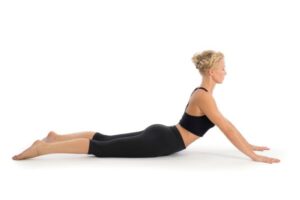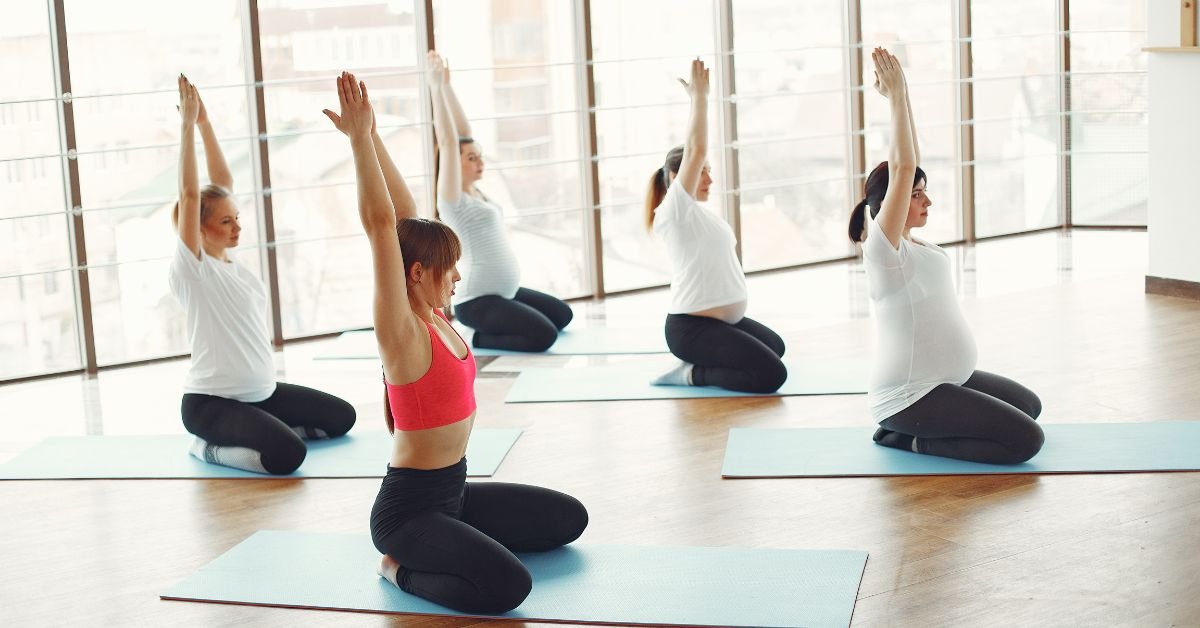5 Best Yoga Poses for Back Pain


Are you among the countless individuals seeking relief from persistent back pain? Look no further than the ancient practice of yoga. Harnessing the power of mindful movement and breath, yoga offers a myriad of poses specifically designed to alleviate discomfort and promote spinal health. In this guide, we’ll explore five of the most effective yoga poses for back pain, each offering unique benefits and gentle relief. Let’s embark on a journey towards greater flexibility, strength, and well-being.
Here are 5 Best Yoga Poses for Back Pain
Adho Mukha Svanasana (Downward-Facing Dog):
Downward-Facing Dog, known as Adho Mukha Svanasana in Sanskrit, is a foundational yoga pose that stretches and strengthens the entire body, particularly the spine, shoulders, and hamstrings. By elongating the spine while drawing the hips upward and back, this pose helps improve posture, relieve tension, and promote a sense of rejuvenation and vitality.
How to Do It:
- Start on hands and knees, wrists under shoulders, knees under hips.
- Tuck toes, exhale, lift hips for inverted V-shape.
- Press hands firmly, spread fingers, press heels down.
- Lengthen spine, relax neck, draw belly to thighs. Hold.
- Release by bending knees, return to starting position.
Cat-Cow Pose (Marjaryasana-Bitilasana):
Cat-Cow Pose, often practiced as a flowing sequence, gently mobilizes and stretches the spine while synchronizing breath with movement. The arching and rounding of the back in Cat-Cow helps alleviate tension, improve flexibility, and promote spinal health.
How to Do It:
- Start on hands and knees, wrists under shoulders, knees under hips.
- Inhale, arch back into Cow Pose, lifting belly and gaze.
- Exhale, round back into Cat Pose, tucking chin and drawing belly in.
- Flow between Cat and Cow, syncing with breath.
- Inhale to Cow, exhale to Cat, repeating for flexibility.
Child’s Pose (Balasana):
Child’s Pose, or Balasana in Sanskrit, is a resting yoga posture that provides a gentle stretch to the back, hips, thighs, and ankles while promoting relaxation and stress relief. By surrendering the body to the floor and allowing the breath to deepen, Child’s Pose encourages a sense of calm and introspection during practice.
How to Do It:
- Start on hands and knees, wrists under shoulders, knees under hips.
- Exhale, lower hips towards heels, rest forehead on mat or cushion.
- Extend arms forward, palms flat or facing up.
- Relax body, let chest sink, breathe slowly.
- Hold pose, focus on releasing tension in back, shoulders, and hips.
Read More : 5 Yoga Asanas For Headache And Migraine Relief
Cobra Pose (Bhujangasana):
Cobra Pose, or Bhujangasana in Sanskrit, is a backbend yoga posture that strengthens the muscles of the back, arms, and shoulders while opening the chest and promoting spinal flexibility. By gently lifting the chest and engaging the back muscles, This yoga pose helps reduce stress, improve posture and stimulate energy flow throughout the body.
How to Do It:
- Lie on your stomach with your legs extended and the tops of your feet pressing into the mat.
- Place your palms flat on the mat under your shoulders, keeping your elbows close to your body.
- Inhale, lift chest and head using back muscles, keep pelvis down.
- Press into hands, lift chest higher, elongate spine, draw shoulders away from ears.
- Hold, then exhale to release back down.
Triangle Pose (Trikonasana):
Triangle Pose, also known as Trikonasana in Sanskrit, is a standing yoga posture that stretches the hamstrings, hips, groins, and spine while strengthening the legs and core muscles. By extending the torso and reaching towards the sky with one arm while grounding through the feet, Triangle Pose cultivates balance, stability, and a sense of expansiveness in the body and mind.
How to Do It:
- Stand at the top of your mat, feet 3-4 feet apart, facing forward.
- Turn right foot 90 degrees out, left foot slightly inward, heels aligned.
- Inhale, extend arms to shoulder height; exhale, reach right hand to shin, ankle, or block.
- Extend left arm up, creating a straight line from left foot to fingertips.
- Keep chest open, gaze at left thumb, hold, then inhale back to standing and repeat on the other side.
In conclusion, incorporating these five yoga poses into your routine can be a transformative journey towards a healthier, pain-free back. By embracing the ancient wisdom of yoga, you not only address physical discomfort but also nurture a harmonious balance between your body and mind. Whether you’re a seasoned yoga practitioner or a beginner, these poses offer a gateway to improved flexibility, strengthened muscles, and a renewed sense of well-being.
Embrace these yoga poses regularly to foster a harmonious blend of strength, flexibility, and tranquility in your wellness routine. Want to learn Yoga? Visit Body and Mind Yoga Center, we provide the best yoga classes in Dubai with a variety of lessons suited to fit your needs and preferences.
Share this post :
Most Recent Posts
- All Posts
- Yoga
- Yoga For Kids
- Yoga For Womens
Category
Have Question
Looking for the best yoga classes in Dubai? Visit our state-of-the-art yoga studio and center in Dubai for a rejuvenating and transformative experience.










